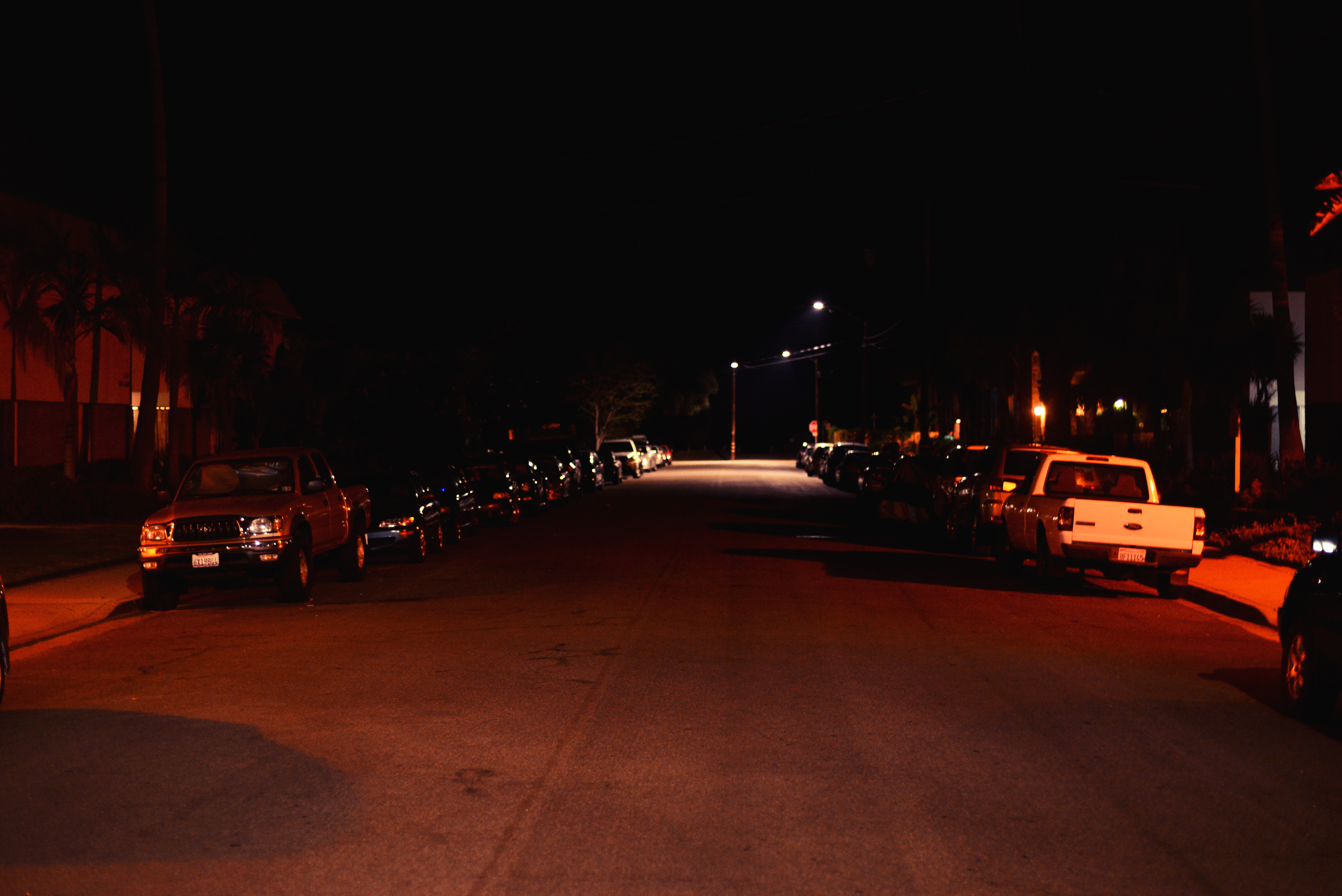
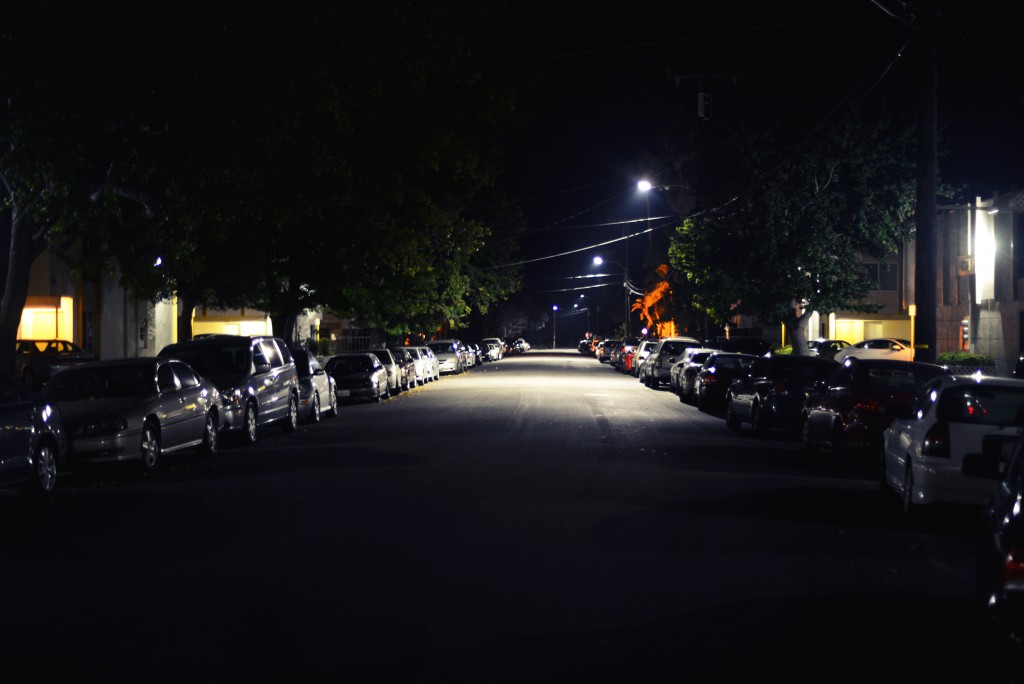
Hector Sanchez Castaneda
Isla Vista Beat Reporter
Photos by Benjamin Hurst, Photo Editor, and Mathew Burciaga, Executive Managing Editor
Andres “Andy” Esteban Sanchez, a second year pre-biology major at the University of California, Santa Barbara, passed away on the morning of Sun., Oct. 11 in Goleta, Calif. Sanchez had sustained a serious injury early Sunday morning and was pronounced dead at Cottage Hospital at approximately 6:51 AM. The details surrounding his injury, the response of law enforcement, the cause of death and his behavior in those early morning hours have been disputed and continue to be under investigation. Sanchez was 19 years old.
The Morning Of
Jocelin Hernandez and Marvin Ramirez, a student at Santa Barbara City College, were cleaning up the previous night’s party scene at their house at 6753 Abrego Road at approximately 4:30 AM on Sun., Oct. 11. As they cleared up the patio, Hernandez heard screams coming down from the street.
“We were emptying out the cups, we had emptied out three or four when we heard, from down the street, coming towards Camino Corto, a young Latino man screaming for help,” Hernandez said. “He was screaming, ‘Help me, help me.’”
By the time Sanchez entered their patio, he was bleeding profusely from his right bicep near his elbow due to a laceration that he received prior to the encounter. Subsequent investigations have led to the notion that Sanchez suffered his wound by punching through a glass window.
Sanchez approached Ramirez and embraced him. Ramirez, who was shirtless at the time, felt the deep wound against his skin.
“Cartoonish, I can’t even explain it,” Hernandez said of Sanchez’s profuse bleeding. “Cartoonish. It was … With every heartbeat, it was like a gush and pump and we were wondering why he wasn’t passing out.”
Hernandez ran inside the house to awaken Alejandra Melgoza, a third year Chican@ studies and history of public policy double major, who was sleeping in the living room; Ramirez then ran across the patio to ask the neighbors for help. The neighbors were allegedly inebriated and hesitated to provide aid.
Ramirez had tried and failed to stop the bleeding by covering the wound with a tank top. After sitting Sanchez down, Ramirez and Hernandez ran into their apartment for towels. By this time, Melgoza was on the phone with emergency dispatch.
“She was far away so everything she was saying [was] in a calm manner,” Hernandez said.
Sanchez, who was behaving erratically, according to the witnesses, ran out of the patio to a nearby apartment complex and started banging on the door, yelling “This is my house,” according to Ramirez. He started attempting to hit the apartment window, but Ramirez restrained him before he could inflict any more damage.
“I was kinda scared he was gonna hit me … ‘cause he was strong because of his adrenaline, but he was just trying to go inside his house,” Ramirez said.
“I was just screaming loud and no one, no one … not even the neighbors came out,” Ramirez said.
At this point, Ramirez recalled, Sanchez collapsed and requested water. While Hernandez stayed with Sanchez, Ramirez ran into the house for a glass of water, gave it to Sanchez, then ran into the street to begin shouting for help.
“I was just screaming loud and no one, no one … not even the neighbors came out,” Ramirez said. “Not a single soul came out, until all the cops got here.”
Meanwhile, Hernandez was with Sanchez, trying to maintain the towel on his arm. Hernandez recalled the experience as being “very horrible” due to Sanchez’s hallucinations, which lead him to attempt to have sexual intercourse with Hernandez while the two were alone. Hernandez, a survivor of sexual assault, explained that the moment was “very triggering.”
She continued, “It was very hard but I was trying to maintain his arm down so he wouldn’t bleed out, and that’s when I started screaming at the top of my lungs, because I wanted Marvin to come and I wanted somebody to help me. So I was screaming and screaming but I was holding him down so the blood wouldn’t gush out, but I could feel every time, like with every heartbeat, I could feel it just pump just more and more though the towel … It was so much.”
Hernandez’s screams prompted Ramirez to return to the scene and awakened Areli Ariana Balderrama, who ran back into the house for blankets after seeing the amount of blood around the scene, in an attempt to stop the bleeding.
First Responders
This is where the narrative divides. The student witnesses say that all three first responders — the Isla Vista Foot Patrol (IVFP), Santa Barbara County Fire Department (SBCFD), and American Medical Response (AMR) — displayed a lack of urgency and disregard for Sanchez’s well being.
The IVFP and SBCFD have both responded to these allegations, and claim their officers did everything they could to save Sanchez’s life.
“[W]hen the cops got here, [they] didn’t even have a single light on … not even a siren,” Ramirez said. “[The officers] just drove in … you don’t even hear the tire noise, [they] just like [drove in] smoothly.”
The witnesses stated that they saw a lack of urgency in the deputies’ demeanor, and criticized the overall role of law enforcement.
IVFP Station Lieutenant Rob Plastino responded to these allegations by explaining the exact role law enforcement takes in a medical emergency dispatch. The officers were dispatched at approximately 4:41 AM and arrived at the scene at approximately 4:44 AM, meaning it took three and a half minutes for the first responders to arrive.
“In this case, we were the first on the scene, because we were there in Isla Vista, we were there in, like I said, three and a half minutes,” Plastino said. “When we first get there, we get out we look at — one deputy goes to the victim while the other one I think is still in the car, and we were listening in the car. The deputy that gets out is dealing with a young lady that was there with the victim, and she’s trying to hold him down because he’s been running around and lost a lot of blood. And that first deputy took a look at the injury just to see what kind of injury it was. [A]fter we saw it was a pretty catastrophic injury … there was not that much more we could do and tried to keep the patient calm. And that was basically it, that was all our role was.”
The firefighters were the second responders to arrive, while the ambulance arrived third, according to Plastino.
“The firefighter was getting off his car, he turns around, and he starts buttoning up his suit, and he’s just buttoning it up, and we’re screaming … ‘Hurry up, help, come on, we don’t have time,’” Ramirez said.
In a phone interview with The Bottom Line, SBCFD Public Information Officer David Zaniboni explained the perceived “lack of urgency”; while the witnesses claim that an SBCFD firefighter appeared to have been taking his time, Zaniboni explained that “buttoning up [their] suit[s]” is actually safety protocol.
“They put on long-sleeve shirts, gloves, safety glasses because of the amount of blood and bodily fluids,” Zaniboni said “You have a … patient thrashing around violently that’s covered in blood, we’re not going to do any good if we contaminate ourselves. [It is a] biological hazard.”
Zaniboni added that the firefighter paramedic onboard the firetruck administered treatment onsite, and accompanied Sanchez in the ambulance en route to the hospital.
The witnesses have repeatedly stated that one of the deputies pulled out a baton when approaching Sanchez. Balderrama stated that, while they were holding Sanchez, an IVFP officer approached them, warning them to “step back” as he pulled out his baton. However, Plastino negates all claims that a baton was used.
“Absolutely untrue. Absolutely 100 percent untrue.” (Lt. Plastino on allegations of baton use)
“Absolutely untrue,” Plastino said. “Absolutely 100 percent untrue. I have to give some leeway to the students who have never dealt with a traumatic injury. Their perceptions might be skewed. The deputy that has first got out of the car had a flashlight in his hand but it was a fairly small flashlight. So to see that in their mind as a baton and using that baton in some fashion, as I’ve heard, is completely false. The deputy had that small flashlight and that was it. It wasn’t even really used. And I don’t — all I can think of is that in their — in the moment of the tragedy, with everything else that’s going on, things probably were perceived differently in their eyes. But I can absolutely tell you that there was no baton used, no baton was brandished, no baton was taken out of the car or used against anybody, against the victim, against any bystanders — it just flat out didn’t happen.”
The witnesses stated that officers approached Sanchez and pulled his injured arm up and removed the towel in a harsh manner. Hernandez stated that she and the other witnesses said, “Oh my god, stop, you’re hurting him,” yet claims that their cries were disregarded.
Even though witnesses allege that Sanchez was treated brutally by IVFP — Ramirez gives an account of deputies “dragging” Sanchez — Plastino recalls a different account of the morning, and firmly stated in an interview with The Bottom Line that IVFP did not move Sanchez at all. According to Plastino, the fire department and paramedics moved Sanchez in order to transport him to the hospital and provide him with proper treatment. Plastino attributes the accusations to the witnesses response to experiencing a traumatic event, and that IVFP “did not treat him roughly or harshly or brutalize him in any way.”
“There was absolutely no reason for us to be there to do some kind of investigation, there was no reason for us to handle that call in any other way,” Plastino said. “It was a medical call from the get-go, it was a medical call every step of the way. He was given and afforded every single bit of potential medical help that this county can provide, and in a very expeditious way.”
Ramirez criticized the deputies on the scene for not arriving with first aid kits.
“How are you a safety officer and you only have a baton and a gun, and you don’t have … gauze just to stop blood?” Ramirez questioned.
But according to Plastino, IVFP does not carry first aid kits, and while they are in some vehicles, they are rarely utilized and are not equipped with sufficient supplies for treating serious injuries, like Sanchez’s.
“Whenever we’re injured in the field and it’s beyond a scrape or a bruise, we have to call the medics and wait for paramedics to arrive,” Plastino said. “Law enforcement is treated exactly the same way as the public in that regard; we don’t even have the things to treat ourselves. We either have to know or try and find a first aid kit to try and treat ourselves or we have to call the medics and it’s the same there.”
Ramirez stated he saw no pictures taken of the scene, and criticized deputies for not investigating further by taking every witness’ name.
“They completely dismissed us,” Balderrama said. “But as soon as the roommate, who I want the record to show is a white man, started speaking — and keep in mind he didn’t show up until the officers showed up, so he was there way after — the officer took him seriously and was listening to every word he was saying. But whenever we spoke, we were ignored and we weren’t even speaking. He didn’t even see us.”
Plastino denied race had anything to do with the way deputies handled themselves. He continued to deny allegations that IVFP neglected to take photos, stating that one deputy took a photo of a window while another was interviewing witnesses and Sanchez’s roommate, after Sanchez had been transported to the hospital.
“We’re not there to investigate a crime, we’re there to assist with a medical call,” Plastino said.
Plastino also denied claims that the witnesses were not given adequate attention because of their ethnicities. While IVFP “only talked to the one white guy who was there,” Plastino recalled the witnesses’ account, he stated that “that one white guy” was Sanchez’s roommate, and believes that because he knew Sanchez best, his roommate was IVFP’s best source of information.
“You can see how things are twisted, because they are in a totally different mindset after having just witnessed a horrific scene and having dealt with someone who they may not have even known but they certainly cared about, which I appreciate, and they were emotional about it,” he said.
According to Santa Barbara County Sheriff’s Office Public Information Officer Kelly Hoover, Sanchez’s roommate believed that Sanchez had ingested a synthetic drug, such as LSD or K2, which may have lead to his hallucinations and erratic behavior. While IVFP believed speaking with Sanchez’s roommate to be the best method of obtaining information about the events leading up to the moment the witnesses found Sanchez, Plastino also confirmed that IVFP did speak with other people.
“Again, I want to give them the benefit of the doubt to say that their skewed perspectives were because of their trauma,” Plastino said, “but many many days afterwards, they were going before the Associated Students and still proclaiming these things.”
Plastino referred to the AS Senate meeting on Wed. Oct. 14, when all four student witnesses who sat down with The Bottom Line — alongside Ashley Baker, a housemate that was also on the scene — testified to Senate of their experiences.
Witnesses further criticized communication between law enforcement and the Sanchez family. Hernandez said that IVFP neglected to offer translating services; upon speaking with Sanchez’s parents, the parents remarked that they had received more information from the witnesses rather than law enforcement, according to witnesses.
Although IVFP has Spanish-speaking staff to provide translation services, Plastino remarked that IVFP would not be contacting family regarding death notifications. He said that the protocol is to call the sheriff station where the family is located, and have the local agency notify the next of kin in person.
However, Plastino admitted he was not aware of the local hospital’s protocol regarding death notifications.
“All I can tell you is that it absolutely wasn’t the sheriff’s office because we would not have done it that way. We realize that getting any notification of someone that dies is an extremely emotional moment, and to try to provide that information over the phone is, in my opinion, not the right way to give notification unless there is no other way of giving the notification.”
In a statement released by Hoover, it was announced that Sanchez was pronounced dead at Cottage Hospital at approximately 6:51 AM. The cause and manner of death are currently under investigation by the SBC Sheriff’s Coroner’s Unit.
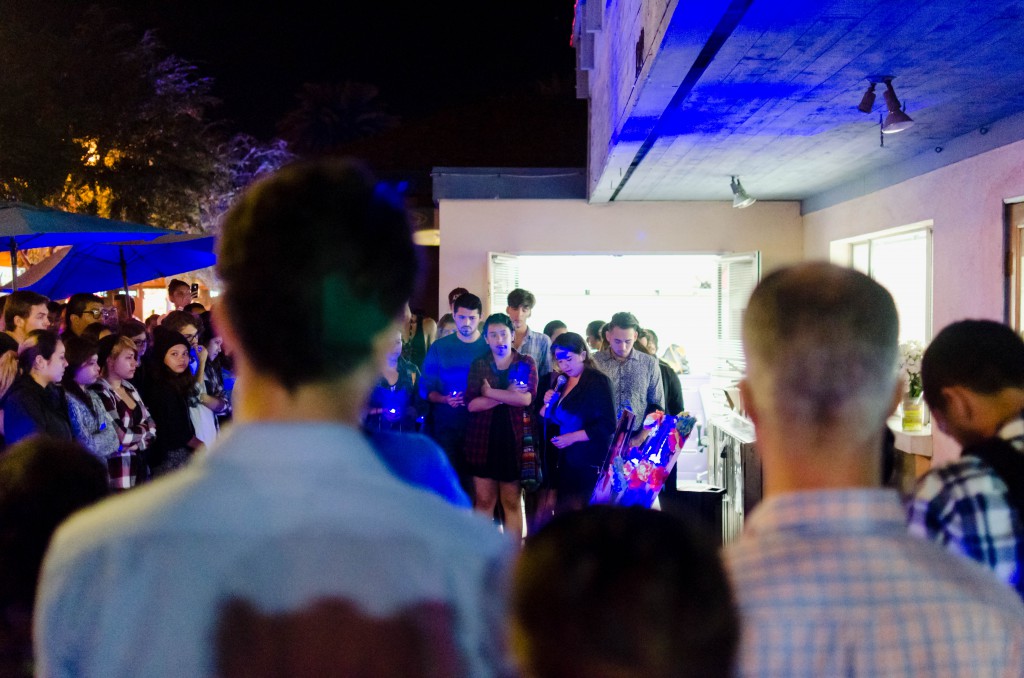
Remembering Andres Esteban Sanchez
Chancellor Henry T. Yang shared his condolences in an email to The Bottom Line.
“This is an extremely sad time for our UC Santa Barbara family, as we have lost one of our own,” Yang wrote. “We were devastated to hear of Andy’s death, and his family and friends have our deepest condolences. Andy had a bright future ahead of him, and it is heartbreaking to see a young life cut short. Our campus is committed to do everything we can to help those affected by this loss, and we are providing counseling services for friends and peers here on campus.”
“THIS IS AN EXTREMELY SAD TIME FOR OUR UC SANTA BARBARA FAMILY, AS WE HAVE LOST ONE OF OUR OWN,” Yang wrote.
Dean of Student Life Katya J. Armistead addressed the incident on Wed. Oct. 14, and informed the community of a candlelight vigil to be held the day after, on Oct. 15.
“It is always heartbreaking to lose a member of our community, and my thoughts are with Andy’s family and his friends who have been personally impacted,” Armistead wrote in an email through the UCSB Office of Student Life. “Losing a fellow Gaucho reminds us all to take care of one another. As always, I urge you to seek out help and support from Counseling and Psychological Services (CAPS), especially if you knew Andy and would like to talk to someone about your loss.”
She also provided a link to the donation page, created by Associated Students to help the Sanchez family in their time of need.
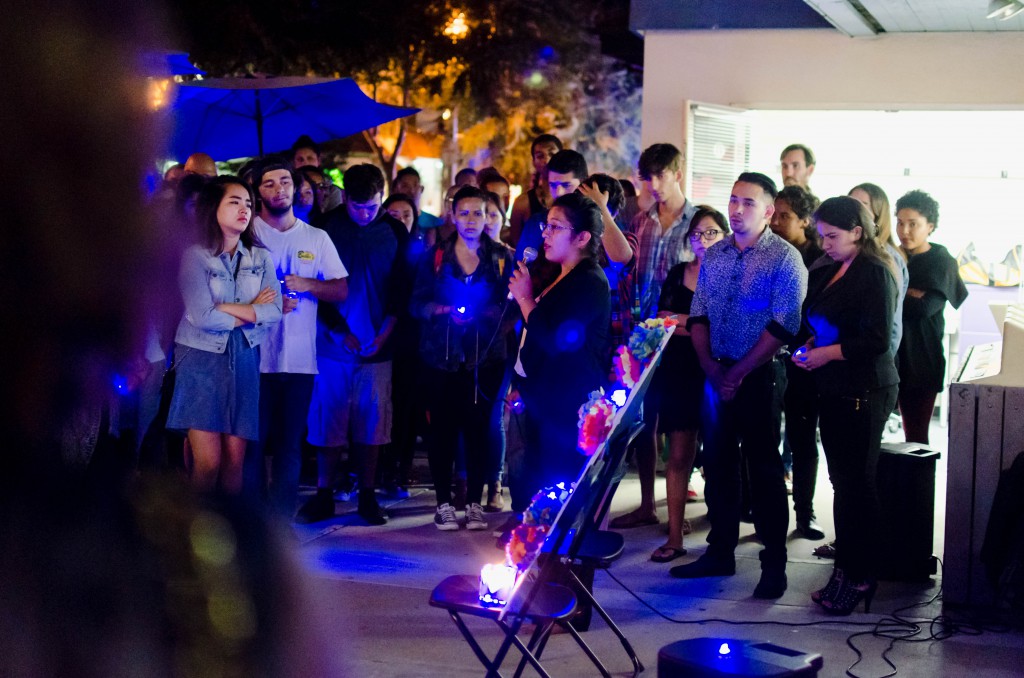
On Thurs. Oct. 15, Sanchez’s friends, students and community members gathered at Pardall Center to pay respects and to remember Sanchez for who he was. As people arrived, they were handed blue LED tea lights, iconic for their representation of the relationship between UCSB and the IV community.
One student in attendance was Eddie Nixon, a second year who met Sanchez while living in Santa Catalina Residence Hall during their freshman year.
“I saw a change in him from last year that I thought was just phenomenal,” Nixon said. “His face was glowing, and he was more driven than I’d ever seen him before. I cannot explain the impact on my life that this is going to have. And me having to continue on without Andy is going to be one of the hardest things I’ll ever have to do at UCSB … I’m currently taking a leave of absence on this quarter because it’s a lot of stress, and he would have pushed me through it. He would have said ‘Eddie, just finish the quarter and do what you gotta do, you’ll get through it.’”
Halfway through the vigil, attendees were given the chance to place their tea lights, candles, and flowers on Sanchez’s memorial portrait. After which, more friends and community members were welcomed to share their thoughts and memories of Sanchez.
“I just hope we all can remember Andy and not forget him — don’t let him be forgotten…”
“I’m so thankful to say I was able to pass the soccer ball with him before he left this world,” second year political science major Carissa Garcia said. “I just hope we all can remember Andy and not forget him — don’t let him be forgotten. He was an amazing individual and I hope we all learn from him and just continue, and do. We can all make ourselves better and strive to be more like Andy, because Andy showed me a lot of things. It’s just sad to see a young man not be able to fulfil all his dreams. I love Andy and I hope he knows how appreciated he is by everybody.”
Community, understanding and remembrance were the main themes of the night.
“We’re gathered here today to honor his memory, and to provide each other with the support of a community,” Second year pre-political science major Gabriel Pragin said. “I’d love to give any of you guys a hand. Hey man, life’s no good without a smile.”
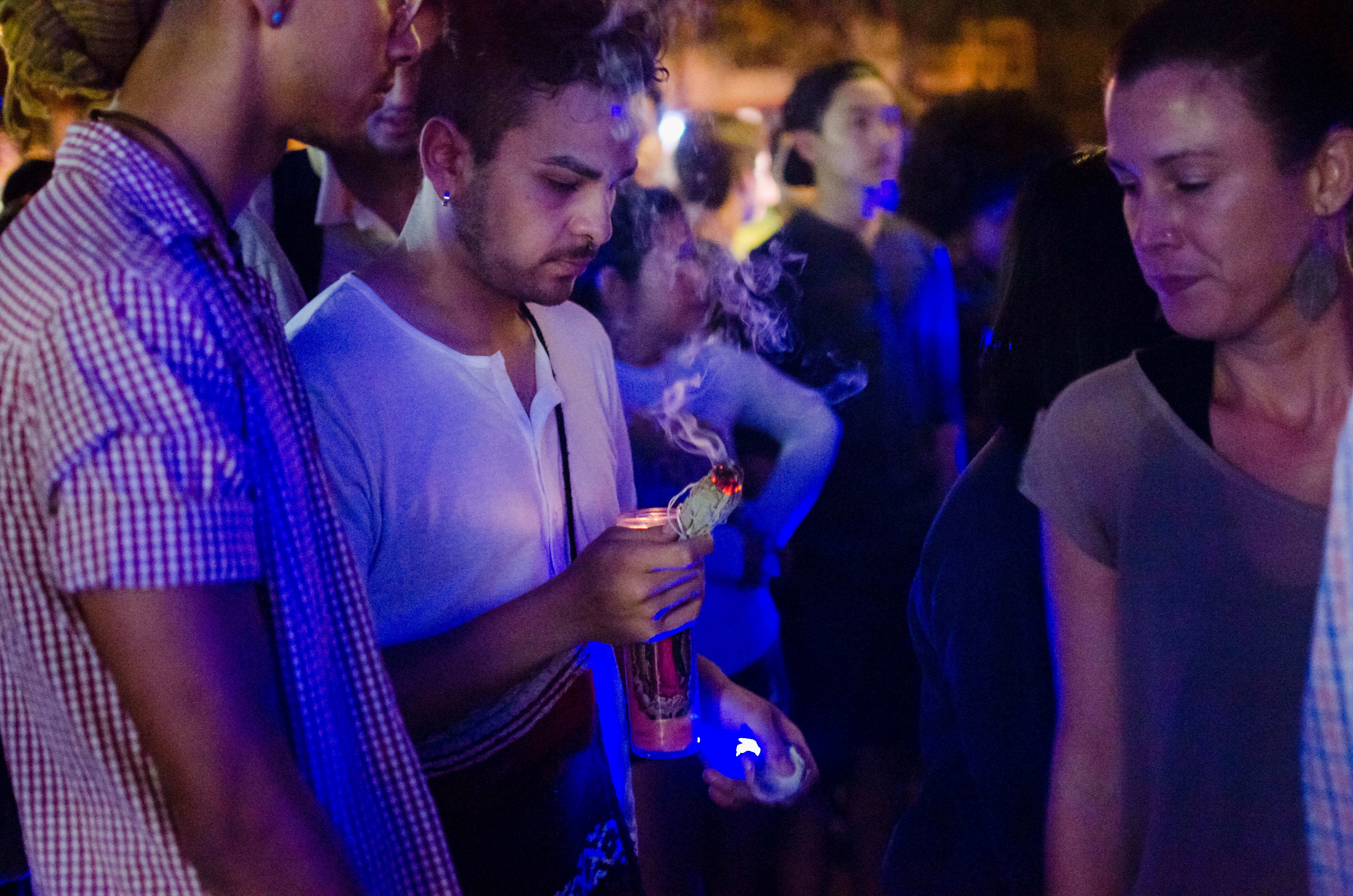
Updates:
Oct. 22. The Sheriff’s office does not possess any type of footage of the incident, according to PIO Kelly Hoover.
Oct. 23. The Santa Barbara County Public Health Department has concluded that emergency medical personnel dispatched for the Oct. 11 incident followed all appropriate protocol, according to their press release.
Witnesses claim that the medical response team “showed up with no urgency.”
The review — which included an examination of the 911 calls — was conducted by the Santa Barbara County Emergency Medical Services (EMS) Agency, and concluded that the “medical dispatch process [was] found to meet all local and national standards for Emergency Medical Dispatch.”
The American Medical Response (AMR) ambulance arrived at the scene within 8:03 minutes of dispatch which meets the County’s established standards that are, in turn, based on national standards, according to the press release.
Due to confidentiality laws, information of the direct treatment provided on-site has not been released.
Nov. 16. The Santa Barbara County Sheriff’s Office (SBCSO) and the Santa Barbara County Alcohol, Drug and Mental Health Services (ADMHS), released a statement in conjunction with the coroner’s report on Sanchez’s death.
The report has concluded that the cause of death was “acute hallucinogenic polysubstance intoxication,” alongside a “sharp force trauma of the upper extremity.” Furthermore, after reviewing all available information, the death has been certified as accidental.
Substances found inside Sanchez’s body include 25I-NBOMe, ketamine and marijuana.
ADMHS included a warning in the release about a recent spike in the use of hallucinogens. 25I-NBOMe, also known as “25I” and “N-Bomb,” can “result in seizures, aggression, self-harm and agitation, distortions in space and time, psychosis-like symptoms, an abnormally rapid heart rate, increased body temperature, and rapid breakdown of muscle tissue,” among other serious symptoms, according to ADMHS. Ketamine, nicknamed “K” and “Vitamin K,” can result in “in hallucinations, delirium, irrational behavior and progress into cardiovascular and respiratory irregularities,” according to ADMHS.
This statement comes four days days after UCSB Student Health Services sent a university-wide alert of an increase in hallucinogenic drugs, in particular substitutes of Lysergic Acid Diethylamide (LSD).
***
On Oct. 16, The Bottom Line submitted a Public Records request to the Santa Barbara County Sheriff’s Department for access to, or copies of, the official incident report, dashboard and body camera footage and a copy or transcript of Melgoza’s 9-1-1 call.
This article will be updated as we receive more information regarding the investigation.

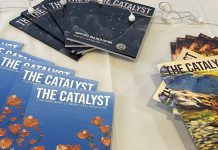





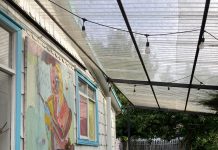
People don’t understand that at that time of night they have their lights on until a block or so from their destination, they don’t make noise. Its so they don’t cause a disturbance, they don’t need people interfering with their work. They probably didn’t show emotion because its something they deal with every single night, plus as the article states there is actual protocol that they need to adhere to for everyone’s safety, including their own. To me, its an unfortunate string of events, INCLUDING the part where the students didn’t at least google how to make a tourniquet and essentially let the person they needed to have control over bleed out. They could have saved his life had they been aware and been at least self trained…and then they want to go pointing fingers at the cops (like its fashionable to do nowadays) like it was their fault. That shit is shameful. Kid does drugs, punches through window severing major arteries and then his student colleagues don’t tie it off and then blame the people who are there to help them and essentially call them racists while they are at it.. What are we coming to?
Why was this only published today
DL: It takes time and a whole lot of effort to gather information. In case you’re not aware, UCSB’s other news publication published an article that basically blamed the first responders for this tragedy. It took them some time to publish a separate article with the police department’s account. It was a disservice to readers to give them one-sided information, chunk by chunk. Some people only read the first article, and did not bother to read the rest, meaning that there are some out there that still believe the police department to be responsible for the death of this young man.
TBL gathered all the information and patiently assembled the missing pieces into one cohesive article. That was why it was published today, because news organizations have a duty to present fair, accurate information.
Sorry, but if you are a good reporter, you are able to get both sides and all the facts and report same day. News is NEWs. This article is well written, but reporting three days later? That is not great.
This article is extremely well-researched and well-presented, respectful to all parties involved. The tragedy is a more far-reaching than is addressed here, however.
At some point, perhaps not now while more pressing questions about what happened are being investigated, but at some point the use of illicit drugs needs to be addressed. Andy was a wonderful person, I’m sure. He just like any of us could have died from any number of causes that were not related to his actions. But if his roommate is accurate and Andy did ingest LSD or K2, then he did play a role in his death. A very big role. He made a horrible choice. He put his life on the line.
Young people in general but, yes, many specifically at UCSB (which I can only speak to because I graduated from there two years ago) justify their poor life choices by saying they are young and experimenting, and then they don’t take responsibility when things don’t turn out well. Andy could have died from crossing the street, from experiencing an illness, from an unavoidable accident. But if he took a hallucinogen that led to his death, he is responsible for it. Not the neighbors. Not the first responders. Not his parents. He is.
While I love UCSB and loved my experience there, it’s time to foster a culture that treats young people like adults who can and should be responsible for their actions– supporting, caring, nurturing, but honest about the power of individual choices. It’s the loving thing to do, and might even help prevent the continuation of an environment in which tragedies like this are not all together surprising.
Please, someone, just bulldoze this hellhole.
Comments are closed.